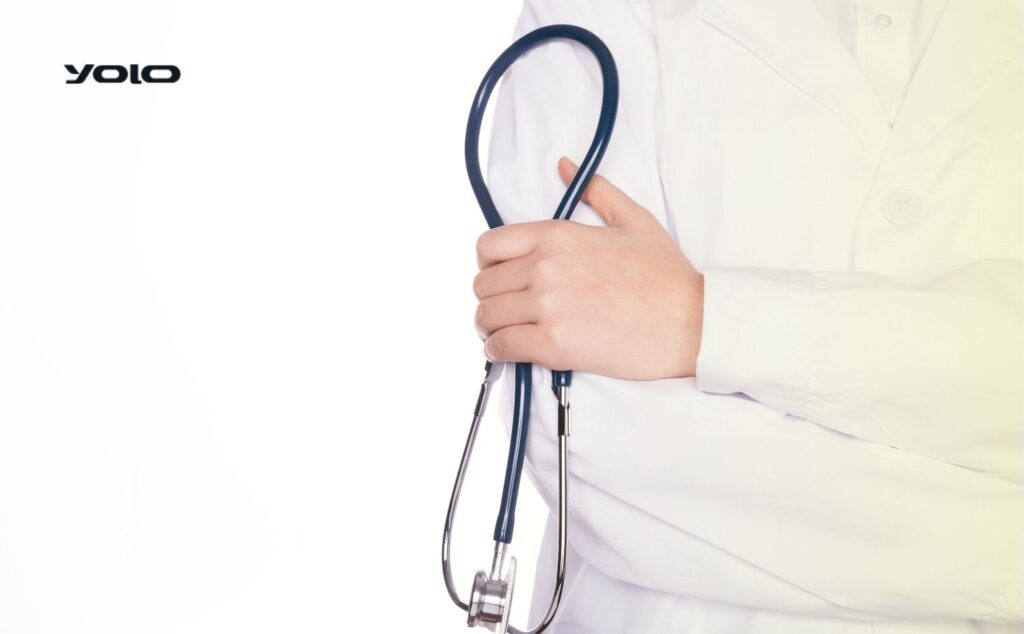Imagine you’re managing a bustling clinic, juggling patient appointments, staff schedules, and administrative tasks. It can be overwhelming, right?
That’s where YOLO’s Doctors and Nurses Management Software comes in. Designed to simplify your daily operations, this tool helps you focus more on patient care and less on paperwork.
Let’s find out how it can make a difference in your practice.
What is “Doctors and Nurses Management Software”?
Doctors and Nurses Management Software, often referred to as Practice Management Software (PMS), is a digital tool designed to assist healthcare professionals in handling the administrative and operational aspects of their practices. This software simplifies essential tasks, helping medical staff focus more on patients:
- Appointment Scheduling: Makes booking easier, with automated reminders to reduce missed appointments.
- Patient Registration and Billing: Organizes patient details and solve billing issues, and reduce errors to minimum as possible.
- Reporting and Analytics: Provides insights into operations to support better decision-making
For instance, it can automate appointment reminders, verify insurance eligibility, and manage patient records, all of which contribute to a smoother workflow.

How could Doctors and Nurses Management Software help?
Doctors and Nurses Management Software (often part of broader practice management systems) is designed to simplify daily operations in healthcare settings. And, this happen through some very important steps:
(1) Efficient Data Collection
The first step to any well-managed practice is efficient data collection. This “Doctors and Nurses Management Software” collects and stores essential information, such as patient demographics, appointment histories, billing information, and employee schedules, in one secure place.
- Centralized Database: Having everything in one place supports easy flow of information and prevents issues like misplaced files or duplicate records. By consolidating patient and staff data, which helps avoid scattered files or data lost across various systems.
- Real-Time Access: With centralized data, doctors, nurses, and administrative staff can access up-to-date patient information whenever they need it, reducing time spent on manual information retrieval. This is especially useful for doctors needing quick access to a patient’s recent test results or nurses checking treatment histories before administering care.
Example: A clinic might integrate patient medical records, test results, and appointment history into the software so staff can quickly access comprehensive information about any patient.
(2) Data Cleaning and Preparation
Errors or incomplete information in patient records can disrupt workflows and risk patient safety. The data cleaning and preparation feature addresses this by validating and standardizing all collected data.
- Automatic Data Checks: The software identifies duplicate records, incomplete fields, or inconsistencies, alerting staff to correct them promptly. And, this will keep information accurate and ready for analysis or use.
- Data Standardization: Ensuring that data formats (like dates or measurement units) are consistent across all records is crucial for clear communication and effective analysis. So, when everyone is working with standardized information, misunderstandings are less likely.
Example: Suppose a clinic has patient records with different formats for birth dates or addresses. The “Doctors and Nurses Management Software”standardizes these details, so records remain uniform, eliminating errors that can come from misinterpretation.
(3) Appointment Scheduling
Appointment scheduling is at the heart of any healthcare practice, and an organized scheduling system can make a huge difference in efficiency. This feature of “Doctors and Nurses Management Software” supports online booking, cancellations, and reminders, reducing missed appointments and wait times.
- Easy Booking and Reminders: Patients can schedule their own appointments, often through a patient portal, while automatic reminders (sent via SMS or email) help them remember their visits.
- Efficient Time Management: Clinics can optimize staff time by avoiding double bookings or empty slots. The software can display open slots at a glance, making it easier to manage busy periods and give staff a manageable schedule.
- Rescheduling and Cancellations: Cancellations and rescheduling can be a hassle, but with an integrated system, these are updated instantly, giving staff time to adjust and potentially fit in other patients.
Example: In a busy clinic, a patient forgets their appointment time. With automated reminders, they’re alerted beforehand, helping reduce no-shows and keeping the day’s schedule smooth.
(4) Patient Registration and Billing
Patient registration and billing are time-intensive tasks that benefit greatly from automation. With Doctors and Nurses Management Software, these processes are made faster and more accurate.
- Streamlined Registration: Patients can complete their registration information online, filling out their forms before they arrive. This makes the check-in process quicker, as all their details are already available in the system.
- Billing Integration: Billing and coding for healthcare services can be complex. The software simplifies this by automating bill generation based on the care provided, whether it’s a consultation, procedure, or lab test.
- Insurance Verification: Automated insurance checks ensure that patients’ information is up-to-date and that they’re eligible for specific treatments. This also avoids surprises at payment time and ensures faster claim processing.
For example: A clinic using automated billing and insurance verification can generate invoices that accurately reflect the care provided and any covered expenses. Staff don’t have to manually check or calculate each bill, which speeds up the entire process.
Yolo System | Clinic Management System
The UAE’s Only Clinic Management System with a 24-Hour Support Guarantee – Or Your Money Back!
(5) Data Exploration and Reporting
Doctors and Nurses Management Software offers robust reporting features that allow healthcare professionals to review various metrics, from patient demographics to billing performance. These insights can guide improvements in patient care, scheduling efficiency, and operational management.
- Patient Trends and Analytics: The software can generate reports that highlight trends, like peak appointment times or the most common services. This insight helps clinics adjust staffing or add resources to handle high-demand times.
- Billing and Financial Reports: Tracking financial performance is essential for any practice. With billing reports, clinics can assess where delays or errors might be occurring and implement changes to improve cash flow.
- Quality of Care Reports: By analyzing treatment outcomes and patient feedback, clinics can identify opportunities to enhance the quality of care they provide, making their services more responsive to patient needs.
For instance: A clinic reviews appointment data and notices peak hours on Monday mornings. They use this insight to adjust staffing, improve patient flow, and reduce wait times during those busy periods.
(6) Implementation and Monitoring
Implementation and monitoring features in management software ensure that practices not only adopt new processes but also continue to benefit from them over time.
- Continuous Monitoring: The “Doctors and Nurses Management Software” tracks daily operations, providing feedback on where things are running smoothly or where bottlenecks might exist. This helps administrators make proactive adjustments as needed.
- Performance Metrics: Clinics can track metrics such as patient wait times, staff utilization, and billing accuracy. With these measures in place, administrators can make data-driven adjustments to improve efficiency and patient satisfaction.
- Feedback Mechanism: Some systems allow clinics to gather patient feedback, providing insight into areas for improvement, such as appointment wait times or satisfaction with services. This feedback loop is invaluable for making patient-centered changes.
Imagine That: A clinic that reviews its average patient wait times notices that they’re longer on Wednesdays. They use this information to shift staff schedules or adjust patient flow on those days, enhancing the patient experience.

What are the challenges of Doctors and Nurses Management Software implementations?
Implementing Doctors and Nurses Management Software, commonly known as Practice Management Software (PMS), can significantly enhance the efficiency of healthcare operations.
However, the process is not without its challenges. So, understanding these potential hurdles is essential for a successful transition.
1. High Initial Costs
Adopting a new PMS often requires a substantial upfront investment. Expenses include purchasing licenses, setting up infrastructure, and integrating with existing systems. Additionally, ongoing costs such as software updates, support, and cybersecurity measures can add to the financial burden.
Strategies to Mitigate Costs:
- Explore Different Pricing Models: Consider Software-as-a-Service (SaaS) options, which allow for subscription-based payments rather than a large upfront fee.
- Seek Financial Assistance: Look into government incentives or grants aimed at promoting healthcare technology adoption.
- Plan for Long-Term Expenses: Develop a comprehensive budget that accounts for both initial and ongoing costs to avoid unexpected financial strain.
2. Resistance to Change Among Staff
Healthcare professionals, especially those accustomed to traditional methods, may be hesitant to adopt new “Doctors and Nurses Management Software” technology.
This is might because some Concerns about increased workload, the time required for training, and doubts about the system’s efficacy can lead to resistance to it.
Approaches to Overcome Resistance:
- Involve Staff in the Process: Engage healthcare professionals in the selection and implementation stages to increase buy-in and reduce pushback.
- Provide Comprehensive Training: Offer role-specific and simulation-based training programs to build confidence and ease the transition.
- Communicate Benefits Clearly: Highlight how the new system can improve patient care and reduce administrative burdens, addressing specific concerns staff may have.
3. Data Migration Challenges
Transferring existing patient data from paper records or older digital systems to a new PMS is complex and time-consuming. Also, errors during migration can lead to lost or corrupted data, potentially compromising patient care.
Best Practices for Data Migration:
- Ensure Data Accuracy: Use trusted vendors and follow industry best practices, such as encrypting patient health information during transmission, to maintain data integrity.
- Validate Post-Migration Data: Compare original and migrated data by running parallel databases or auditing selected samples to verify accuracy.
Read more: Why all Clinics Need Patient Management Software?
4. Interoperability Issues
Ensuring that the new PMS such as “Doctors and Nurses Management Software” can communicate effectively with existing systems is crucial. However, a lack of interoperability can hinder data sharing and disrupt workflows.
Solutions to Enhance Interoperability:
- Adopt Standardized Protocols: Implement standards like HL7 or FHIR – which they are considering a next-generation interoperability standard created by the standards development organization Health – to facilitate smooth data exchange between systems.
- Utilize APIs: Application Programming Interfaces can enable different software applications to communicate and share data effectively.
5. Ensuring Data Security and Compliance
Protecting patient information is paramount. So, implementing a new PMS can introduce risks related to data breaches and compliance with regulations such as HIPAA.
Measures to Safeguard Data:
- Implement Strong Security Protocols: Use encryption, multi-factor authentication, and regular security audits to protect sensitive information.
- Train Staff on Data Privacy: Educate employees about best practices for handling patient data and recognizing potential security threats.
6. Workflow Disruption During Transition
Introducing a “Doctors and Nurses Management Software” can temporarily disrupt established workflows, leading to decreased productivity and potential errors.
To Minimize Disruption:
- Plan a Phased Implementation: Gradually roll out the new system to allow staff to adapt without overwhelming them.
- Provide Continuous Support: Offer ongoing assistance and resources to address issues promptly as they arise.
7. Usability and User Experience Concerns
If your doctor and nurse management software is not easy to use, it can frustrate and disrupt staff, which in turn can lead to poor patient care.
To solve this problem:
- Select User-Centric Software: Choose a system designed with input from healthcare professionals to ensure it meets their needs.
- Gather Feedback: Regularly collect input from users to identify pain points and areas for improvement.
8. Limited Technical Support and Resources
Smaller practices may lack the technical expertise required to implement and maintain a new PMS effectively.
Addressing Technical Limitations through:
- Partner with Reliable Vendors: Choose providers that offer robust support services and resources tailored to your practice’s needs.
- Invest in Staff Training: Equip your team with the necessary skills to manage and troubleshoot the system.
Read more: Curious About Clinic Automation Software?
9. Customization and Scalability Challenges
A “Doctors and Nurses Management Software” should be adaptable to the unique needs of your practice and scalable to accommodate your growth. On the other hand, inflexible systems can limit functionality and hinder expansion.
Ensuring Flexibility and Growth through:
- Assess Customization Options: Evaluate whether the software allows for modifications to fit your specific workflows.
- Plan for Future Needs: Choose a system that can scale with your practice, considering potential growth and changes in services.
10. Maintaining Patient Satisfaction
During the transition to a new healthcare management system, the patient experience may be affected, and delays or errors may lead to dissatisfaction.
And for Maintaining Patient Trust, you should:
- Communicate Changes: Inform patients about the new system and how it benefits their care.
- Monitor Patient Feedback: Collect and address patient concerns promptly to maintain trust and satisfaction.
Implementing Doctors and Nurses Management Software offers numerous benefits but comes with challenges that require careful planning and execution.
By proactively addressing these potential obstacles, healthcare practices can enhance efficiency, improve patient care, and achieve a smoother transition to new systems.

How does YOLO deal with the challenges?
YOLO’s Doctors and Nurses Management Software addresses the typical challenges clinics face with a range of practical solutions designed to simplify operations, protect patient information, and improve overall efficiency. Through::
[1] Meeting Regulatory Standards and Ensuring Data Security
YOLO is NABIDH certified, meeting Dubai Health Authority’s stringent standards for electronic medical records. This certification ensures that YOLO aligns with local regulations, providing clinics with confidence in handling patient data securely.
Also, YOLO protects sensitive data with encrypted coding, addressing concerns about data breaches and compliance with local and international privacy laws.
[2] Making Patient Scheduling and Communication Easier
Patients today expect easy scheduling and timely communication. YOLO “Doctors and Nurses Management Software” addresses this with smart appointment scheduling, automated confirmations, and reminders via WhatsApp, Email, SMS, and Push Notifications.
So, patients can access services easily through a patient app, which enhances their experience and builds trust in the clinic.
[3] Simplified Staff Management
YOLO’s Doctors and Nurses Management Software also assists with the Clinic Management Software for staff by tracking employee hours, managing holidays, and maintaining digital employee files with service and cost tracking.
The role management system provides each team member with access to relevant modules, helping staff to organize their tasks independently while supervisors can keep track of the overall workflow with ease.
[4] Inventory and Resource Management for Day-to-Day Operations
For efficient inventory handling, YOLO’s Doctors and Nurses Management Software keeps track of medical supplies and consumables, and can automatically reorder items from suppliers.
This helps clinics prevent stockouts and avoid overstocking, making it easier to maintain a smooth operation.
[5] Data-Driven Financial and Operational Insights
For decision-makers, YOLO offers a real-time dashboard that provides a clear overview of clinic performance and financial data.
This dashboard includes treatment pricing calculators, cost-profit insights, and patient wallet features, making it easy for clinics to manage financials and track revenue effectively.
[6] Simple Implementation and Ongoing Support
Transitioning to a new system can be a hurdle, but YOLO’s Doctors and Nurses Management Software simplifies the setup with an easy 1-2-3 implementation process: sign up, customize settings, and start using it.
No hardware is needed, and YOLO offers support for migration from other systems, including data backup and training for team members, ensuring a smooth switch with minimal disruption.
[7] Device Flexibility for Diverse Clinic Needs
YOLO works across all devices, from desktop computers to smartphones, allowing clinics to operate from various locations without additional hardware. This flexibility is ideal for clinics with multiple sites or those that need to provide mobile access for staff on the go.
[8] Focusing on Patient Satisfaction
YOLO’s Doctors and Nurses Management Software focuses on personalized patient interactions by tracking satisfaction through the Net Promoter Score (NPS).
This feedback helps clinics understand patient satisfaction levels, strengthening the patient-clinic relationship and enhancing long-term loyalty.
Read more: Appointment Scheduling System for Clinics
You can get Yolo software for managing clinics and medical centers
Your top choice for successfully managing your clinic
Automate your clinic With YOLO… NOW!
In conclusion, YOLO’s Doctors and Nurses Management Software provides an all-in-one solution that simplifies clinic management while addressing key challenges head-on, from regulatory compliance to operational efficiency.
For clinics looking for an easy yet comprehensive management solution, YOLO stands out as a reliable partner in enhancing clinic functionality, patient satisfaction, and operational efficiency.
Get started today, and let YOLO take care of the rest.!
